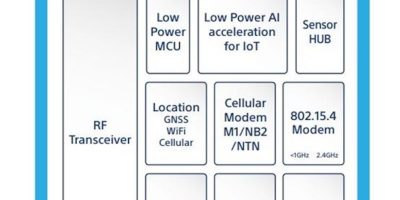Low power chipset combines 5G LPWA with satellite connectivity
Multiple low power connectivity options and low power processing on the edge are offered with the ALT1350 chipset, said Sony Semiconductor Israel.
It is claimed to be the world’s first cellular LTE-M/NB-IoT solution to enable additional LPWA communication protocols, as well as satellite connectivity (NTN), in a single chipset.
It has an optimised standby mode (eDRX) to reduce power consumption by 80 per cent when compared to the current generation, and by 85 per cent when using it to send short messages, according to Sony Semiconductor Israel. Overall improvements in the system’s power consumption will enable four times longer battery life for a typical device, the company added.
The ALT1350’s sub-GHz and 2.4GHz integrated transceiver enables hybrid connectivity for IoT applications such as smart meters, smart cities and trackers. The transceiver enhances coverage, reduces costs, and further decreases power consumption using IEEE 802.15.4-based protocols, such as Wi-Sun, U-Bus Air, and wM-Bus, in additional point-to-point and mesh technologies.
The ALT1350 incorporates a sensor hub to collect data from sensors while maintaining low power consumption. It also provides cellular and Wi-Fi-based positioning and is tightly integrated to provide power-optimised, concurrent LTE and GNSS for tracking applications, all in a single chip, said Sony Semiconductor Israel (formerly Altair Semiconductor).
In addition to low power consumption, the chipset includes mature Release 15 LTE-M/NB-IoT software stack and future compatibility with 3GPP release 17. All these guarantee longevity and ensure the ALT1350 will operate with 5G networks, said the company. There is also a secure element for application usage and integrated SIM (iSIM), designed for PP-0117 to meet GSMA requirements.
The chipset also contains an additional LPWA radio transceiver with targeting operation in sub-1GHz and 2.4 ISM bands for universal connectivity options.
The chipset provides low-power processing capabilities at the edge, ranging from data collection, low-power AI / ML processing of the data, and an MCU.
The device is currently sampling to lead customers and will be commercially available next year.




